This January and February, we’ll be finishing up our look at the second season of Star Trek: The Next Generation and moving on to the third year of the show, both recently and lovingly remastered for high definition. Check back daily for the latest review.
The Ensigns of Command is a Data-centric script from Melinda Snodgrass, the writer responsible for The Measure of a Man. It was the first episode produced in the show’s third season, even if it was the second to air. As with so many third season episodes, The Ensigns of Command was beset by behind-the-scenes difficulties. These issues plagued the episode through all stages of production – from the script through to post-production.
It is a wonder that The Ensigns of Command turned out watchable. While it certainly can’t measure up to Snodgrass’ earlier Data-centric story, it is an intriguing character study that benefits from a focus on character and an understanding of Star Trek: The Next Generation works. While far from an exceptional or defining episode of The Next Generation, it’s a demonstration of how far the show has come that even an episode as troubled as this could look so professional and feel so satisfying.
Watching The Ensigns of Command, there’s little sense of all the trouble brewing behind the scenes – of all the compromises that were necessary to get the show to screen. Instead, the episode looks like a competently produced and skilfully executed piece of Star Trek, the kind of show that the series had spent most of the second season figuring out how to produce. It has some great ideas, a solid focus on character and a charming central performance from Brent Spiner. This would be regarded as a superior episode from either of the earlier two seasons.
However, The Ensigns of Command seems to have been a difficult episode to produce, for a number of reasons. Despite Snodgrass’ experience on the show and her role as story editor, the script for The Ensigns of Command went through a very troubled development cycle. The writer faced resistance from both the cast and the producers on her original draft of the story, and so the version that made it to screen was radically different from what she had intended.
As with quite a few episodes of The Next Generation, Gene Roddenberry had his own guidelines for Snodgrass. Discussing the experience in the documentary Resistance is Futile, Snodgrass explains:
Being a novelist is grand, because nobody ever screws with your work or tells you to change it. But there’s something about the energy in a good writers’ room that’s just fantastic. At one point in Ensigns of Command, I had been given the directive by Gene that Data had to make love, because he was fully functional in every way. I just wanted her to have a crush. I just wanted to do Shane. There’s a little bit of Shane in that script, which is a stranger comes to town and he’s exotic and he’s interesting and she’s never met anybody like him and he’s baffled by this.
And the whole thing about writing Ensigns was that I wanted to do a triptych about Data. The first one was “was he a person or property? okay, he’s a person!” Then he had to learn that command is sometime ephemeral. Sometimes it has nothing to do with the fact that you have the more logical argument. It’s who has the biggest dick. Who can swing it hard enough to get attention. And he has to learn to do that, in a very calculated way. And then Gene, who had read a bit of the outline and had seen part of it, said, “Well, you know he’s fully functional, so I don’t want her to just have a crush on him – I want him to sleep with her!”
Ironically, the romantic subplot between Data and Ard’rian never made it to screen, for a number of reasons.
It has been suggested that it was an aspect of the script trimmed due to sudden reductions to the show’s production budget. Alternatively, Snodgrass herself suggested on the audio commentary for The Measure of a Man that it generated some resistance from Brent Spiner:
The script, as I wrote it, is not exactly what got filmed – because Brent felt I was making Data too emotional. And in fact, I was not, because I was faced with trying to have a robot seduce a woman – or, at least, go physical with a woman – and not be emotional about it. And I was very careful to write it in a way that didn’t, but Brent viewed it as too emotional. So I think there was a tension between how he was written. I was trying to keep him as a thinking machine, groping to understand.
It really does sound like Snodgrass was trapped between all these different perspectives on Data as a character, and had to navigate all of these competing demands. It’s a testament to Snodgrass that the script turned out as well as it did.
Of course, Snodgrass has been quite candid about how The Ensigns of Command was a learning experience for her. It was the first time that her work was really radically re-written, so it’s hard to know precisely how much of Snodgrass’ original ideas (or even her original script) made it to the screen. Either way, The Ensigns of Command turned out quite well for all of its troubled scripting history. The final episode is coherent and built on an interesting premise, even if it seems that the finished script is much more compromised or watered down than the version originally proposed.
Unfortunately, the troubles with The Ensigns of Command extended beyond the scripting phase. Director Cliff Bole was informed rather late in the process that the episode’s budget had been cut by $200,000. For an episode set on an alien planet, using large sets and featuring special effects and model work, that was quite a drastic cut. It’s to the credit of Bole and all the professionals working on The Next Generation that The Ensigns of Command looks as finely polished as it does.
One suspects that the design of the Sheliak, right down to the set design for their bridge area, was driven by these production concerns. The bridge is a black space with some reflective material on the walls, while the costume for the Sheliak appears to be a black duvet cover thrown over a performer – like a more low tech version of Armus from Skin of Evil. It’s something that probably shouldn’t work as well as it does, especially in high definition. Cliff Bole does a wonderful job with the resource and time available.
That said, it is very nice to see an alien species that doesn’t look like an actor with a rubber forehead attached, and the design of the Sheliak is suitably atmospheric and vaguely discomforting. There’s a sense that these are creatures that are truly alien – that aren’t really humanoid and look a bit different from the vast majority of aliens presented on Star Trek. These aren’t creatures with two arms and two legs. They are something different.
The trouble with The Ensigns of Command didn’t stop with a difficult script and a sudden budget reduction. Actor Grainger Hines, who plays Gosheven, was allegedly so dissatisfied with his performance that he asked for his voice to be overdubbed and his name removed from the episode’s credits. As a result, the voice heard in the final cut of the episode for the second most prominent guest star does not come from the actor visible in the role.
While the technical lip synching of the dialogue is quite impressive, it does explain why the character of Gosheven feels so detached and so generic. The product of two different performances (physical and vocal), the episode’s primary antagonist is a bit of a mess. It’s hard to blame anybody for this problem, but the composite performance is perhaps the weakest on-screen element of an otherwise strong episode.
Given all this, you’d be forgiven for assuming that the episode was a huge mess, a disastrous combination of problems producing something that is difficult to watch. Quite the opposite. The Ensigns of Command is a staggeringly professional production, with most of the problems concealed quite well. Indeed, if one didn’t know about the behind-the-scenes difficulties with Grainger Hines, the trouble with Gosheven could be written off as a weak actor in a solid episode.
Interestingly, The Ensigns of Command is very much a character-driven episode. Michael Piller would get a lot of credit for insisting that The Next Generation tell character-driven stories, and the third season represents the point at which Piller took over the writing staff. However, it’s often overlooked or forgotten that Piller didn’t step into that void until a few episodes into the season. Michael I. Wagner was still heading up the writers’ room following the departure of Maurice Hurley.
However, there’s a consistency of vision to the third season, assisted by the fact that two of the four episodes not overseen by Piller fit quite well with his ethos. The fact that Piller wrote Evolution helps, even if he wrote the script before being offered the post. And Snodgrass’ Ensigns of Command is a wonderfully character-driven piece of Star Trek, with Data learning important skills of command – qualities that can’t be taught in books or manuscripts.
What’s interesting is that The Ensigns of Command offers another firm rejection of Roddenberry’s utopianism, making it something of a spiritual successor to The Measure of a Man. There, Data’s refusal to submit to a risky procedure demonstrated the risks inherent in a society where everybody always agreed. Here, Snodgrass goes a step further. She makes a rather astute point that the only way that Roddenberry’s flawless humans could properly exist would be if they were robots.
In a way, paradoxically, Data is closer to Roddenberry’s ideal than any human could ever be. He is incapable of hate or passion or greed or jealousy. He is able to put others ahead of himself. He is never burdened by sorrow, and is always functioning at peak capacity. He is innocent and optimistic and trusting. As such, there’s something interesting about his fascination with humanity – his desire to be more human and less perfect. It’s a wonderful irony at the heart of Roddenberry’s utopia. In theory, the human crew should be aspiring to be Data.
Ard’rian points this out in conversation with Data. “People can be selfish, irrational, stubborn, malicious, you name it,” she tells him. “But computers don’t have those failings.” After all, Data arrives on the colony with a perfectly constructed logical argument, one that cannot be rebuked or rejected. And yet the human settlers refuse to listen. Characteristic of twenty-fourth century humanity, they arrogantly insist that they know best – even when the data does not support their position.
Like The Measure of a Man, Snodgrass suggests that this is the dark side of Roddenberry’s utopianism. There’s no sense of compromise, just a concrete belief in humanity’s own ability to persevere and endure. The views expressed by Gosheven are romantic and idealistic, perfectly in fitting with the subtext of episodes like The Last Outpost and Lonely Among Us. Humanity is the best and the brightest. It can overcome any obstacle. All other viewpoints are inferior.
To Snodgrass, and in keeping with her Shane analogy, Data is the perpetual outsider. He exists beyond humanity, looking inwards. And he challenges that view. When Data butts heads with Gosheven’s romanticism, there’s no question that Data is correct; just as he was correct when he resisted Maddox’s arrogance in The Measure of a Man. Data is an objective observer of humanity, somebody with a more rational perspective. His innocence and optimism provides the perfect vehicle to explore the darker side of Roddenberry’s utopianism, by playing it against Data’s objective outlook.
At the same time, Snodgrass picks up quite well on one of the themes that was hinted at in The Measure of a Man. There’s a question about how close Data is to humanity, and just how much humanity the supporting characters (and the audience) are reading into him. Are we anthropomorphising Data? Are we projecting our own feelings on to Data? Or is he really more human than even he realises?
Ard’rian seems to believe that Data might have an attraction towards her, drawing from various evidence in the episode. “I guess what I really want to know is, do you have any feelings for me?” she asks. Data responds, “I have no feelings of any kind.” Ard’rian concedes, “No, of course you don’t.” We’re never entirely sure that she is convinced of this. After all, it’s a question that can’t ever by completely resolved.
Even Picard himself weighs in on the matter at the end of the episode. “Your performance shows feeling,” he suggests, after reviewing a recording of Data playing violin. “As I have recently reminded others, sir, I have no feeling,” Data insists. Much like Ard’rian, there’s a sense that Picard doesn’t completely believe Data’s assertion. “It’s hard to believe,” he tells his officer. “Your playing is quite beautiful.”
He presses the issue, after Data insists that all he has done is to mimic two well-regarded composers. “Is there nothing of Data in what I’m hearing?” Picard ponders. “You see, you chose the violinists. Heifetz and Bronken have radically different styles, different techniques, yet you combined them successfully.” It’s easy to be swept up in the romance of that, and to assume that Data is far more creative than he would concede. Improvisation is a very human trait, and one he demonstrated at the colony.
However, it’s possible to argue that Data could simply have manufactured a computer algorithm to combine and harmonise those two different approaches to the same piece of music. Algorithmic composition is a technique that currently exists, mathematically generating music, so it’s not too hard to believe that Data could have blended those two styles within the confines of his programming.
So it’s hard to decide if Data’s actions are honest-to-goodness improvisation, a sign that he is much closer to humanity than he realises, or if they are simply the result of a sufficiently advanced computer process that can emulate more organic improvisation. Of course, it’s reasonable to argue that the difference is elementary, and Snodgrass revisits the idea from The Measure of a Man that it’s simply impossible to know how much of Data’s humanity radiates from himself, and how much is projected on to him by the other characters and the audience.
The Ensigns of Command also features a nice little subplot involving Picard and the rest of the crew trying to protect the colony for the advancing Sheliak. The Ensigns of Command has the crew tackling this problem in a manner that fits quite well with The Next Generation. While Kirk’s Enterprise would likely have engaged in a game of brinksmanship with the Sheliak colony ship, but The Ensigns of Command instead focuses on the diplomatic problem.
The Next Generation is typically strongest when it plays to Picard’s strengths – as a negotiator or a diplomat. This has been quite clear in the past. The strongest aspect of The Neutral Zone was the way that it contrasted Picard’s style with that of Kirk in Balance of Terror. There were lots of scenes of the crew talking and debating and discussing amongst themselves, as Picard solicited the opinions and advice of the crew around him.
Here, Picard is faced with a decidedly intellectual problem, rather than a physical one. Certainly, engaging the Sheliak in combat would spark an interstellar war. So Picard and his crew find themselves navigating a legal document that was drafted by “three hundred and seventy two legal experts”, with time quickly running out. “The treaty is five hundred thousand words,” we’re told. “The length was to accommodate the Sheliak. They consider our language irrational, and demanded this level of complexity to avoid any future misunderstandings.”
There are several interesting tangents here that are never really explored. The most obvious is the readiness with which the Federation is willing to accede to the Sheliak demands, even with the discovery of the colony. The prospect of co-habitation or peaceful compromise is never really discussed – most likely because the Sheliak would never agree to any peaceful resolution that would satisfy the colonists. Still, there’s something very fascinating about the readiness with which Starfleet is willing to relocate the colonists to satisfy the approaching Sheliak.
In a way, this can’t help but foreshadow the way the Federation would deal with the De-Militarised Zone in the show’s final season – surrendering human colonies to the Cardassians in pursuit of a lasting peace. It’s a rather weighty ethical issue – at what point does the obligation to the greater good (galactic peace) justify selling the colonists down the river? At what point does it become justified to sacrifice somebody else’s home in order to secure a fragile peace?
The Ensigns of Command doesn’t really deal with that issue. It’s not particularly interested in the political framework for all this or moral balance of rights. It accepts the Federation’s decision to uphold the treaty and uproot the colonists at face value. While Picard tries to find a bloodless solution to the crisis, there’s little indication that the Federation is too bothered by all of this. The most they do is offer their “profuse” apologies when they can’t dispatch another vessel to assist with the evacuation.
This balance of rights is an issue that The Next Generation would return to in its seventh season, with episodes like Journey’s End and Pre-Emptive Strike being a lot more cynical about the Federation’s moral authority than anything we see in The Ensigns of Command. At this point in time, the show’s universe was not sufficiently developed to support such a probing ethical exploration of the issue at hand.
Similarly, The Ensigns of Command also alludes to the intricacies of language necessary to negotiate a treaty with an alien intelligence. Troi discusses the difficulties that such negotiation must pose with an alien organism, and it’s suggested that the Sheliak might even think in a way that makes communication with mankind difficult. It’s not anything that The Ensigns of Command has room to explore, but it’s a bold concept. Indeed, the show would revisit the theme in Darmok.
Still, the treaty does provide Picard with a chance to play up his diplomatic skills. It’s a testament to Picard as a character and Patrick Stewart as an actor that The Ensigns of Command manages to turn his exploitation of a diplomatic loophole into a major victory. “Get me that treaty,” Picard insists. “They’ve been beating us over the head with it for three days. Let’s see if we can’t find something in it that we can turn to our own advantage.”
So when Picard does manage to find a suitably exploitable sub-clause, the moment feels like a huge accomplishment. The sight of Picard wiping the dust from the dedication plaque while ignoring the Sheliak hails ranks with the murder of future!Picard in Time Squared as on of the character’s most bad-ass moments to date. It’s a moment that really says a lot about the outlook and the stakes of The Next Generation, and one which plays the show’s strengths.
(It’s also worth noting that the high definition remaster of the show makes the text of the treaty particularly visible to astute audience members. “We can do search-and-replace,” the important sub-clause of the treat, visible on the monitor, reads. “Come to think about it, that’s what the Sheliak want to do with the colony on the planet.” Luckily, Picard can exploit a loophole inserted “in the event something screwy happens with the treaty.”)
Indeed, The Ensigns of Command actually turned out quite well, despite all the pressure behind the scenes. Snodgrass is still one of the stronger writers on the show, despite Up the Long Ladder, and the production team have reached the point where they can execute even a troubled script with a level of endearing professionalism. Not all the behind-the-scenes stories are heart-breaking either, with the entourage of the Dalai Lama visiting the set during the shooting of the episode.
If this is what a troubled episode of The Next Generation looks like, then the future of the show is very bright indeed.
Read our reviews of the third season of Star Trek: The Next Generation:
- Evolution
- The Ensigns of Command
- Supplemental: The Ensigns of Command by Melinda Snodgrass
- The Survivors
- Who Watches the Watchers?
- The Bonding
- Supplemental: Star Trek (DC Comics, 1989) #19 – Once a Hero…
- Supplemental: (DC Comics, 1989) #19 – The Lesson
- Booby Trap
- The Enemy
- Supplemental: The Romulan Way by Diane Duane and Peter Morwood
- The Price
- The Vengeance Factor
- The Defector
- Supplemental: The Sky’s the Limit – Suicide Note by Geoff Trowbridge
- The Hunted
- The High Ground
- Déjà Q
- Supplemental: (DC Comics) Annual #1 – The Gift
- Supplemental: I, Q by John DeLancie and Peter David
- A Matter of Perspective
- Yesterday’s Enterprise
- Supplemental: The Lost Era – Well of Souls by Ilsa J. Bick
- Supplemental: The Last Generation
- Supplemental: Q-Squared by Peter David
- The Offspring
- Sins of the Father
- Supplemental: Phase II (1978) – Kitumba, Parts I & II
- Allegiance
- Captain’s Holiday
- Tin Man
- Hollow Pursuits
- The Most Toys
- Sarek
- Supplemental: Sarek by A.C. Crispin
- Ménage à Troi
- Supplemental: Imzadi by Peter David
- Transfigurations
- Supplemental: Star Trek/X-Men: Star TreX
- The Best of Both Worlds, Part I
- Supplemental: (DC Comics, 1989) #47-50 – The Worst of Both Worlds
- Supplemental: Vendetta by Peter David
Filed under: The Next Generation | Tagged: Ard, arts, Beverly Crusher, Brent Spiner, BrentSpiner, Chats and Forums, Cliff Bole, Data, Emotion, Ensigns of Command, february, gene roddenberry, Grainger Hines, Next Generation, Organizations, Shane, Skin of Evil, Star Trek Next Generation, star trek: the next generation, StarTrek, Video game, Writers Resources |















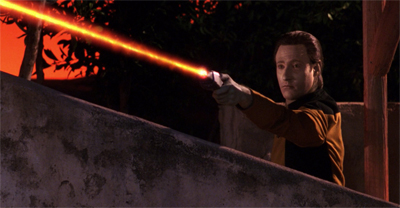

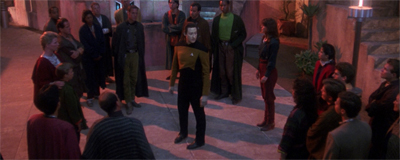
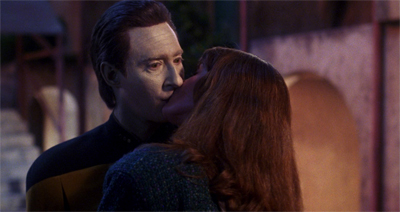

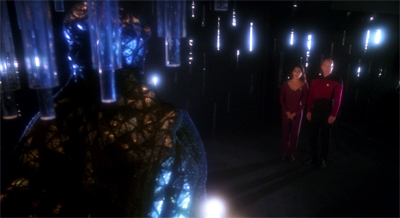
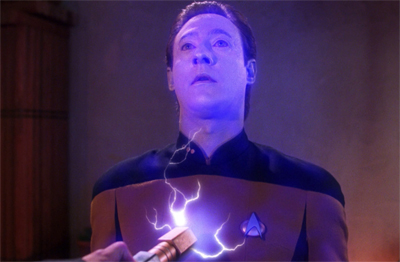

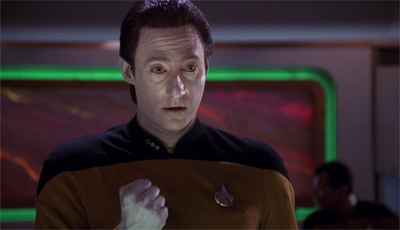

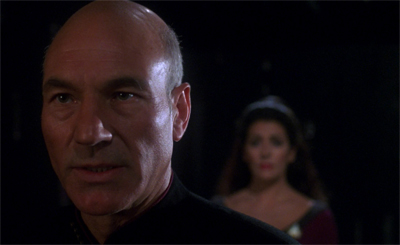
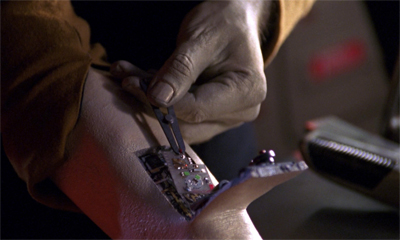
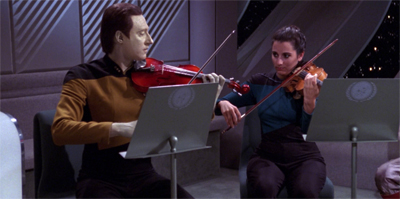

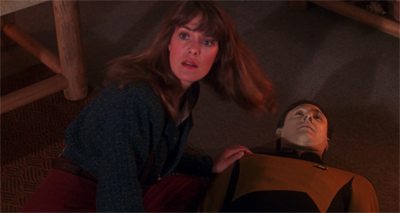









Leave a comment